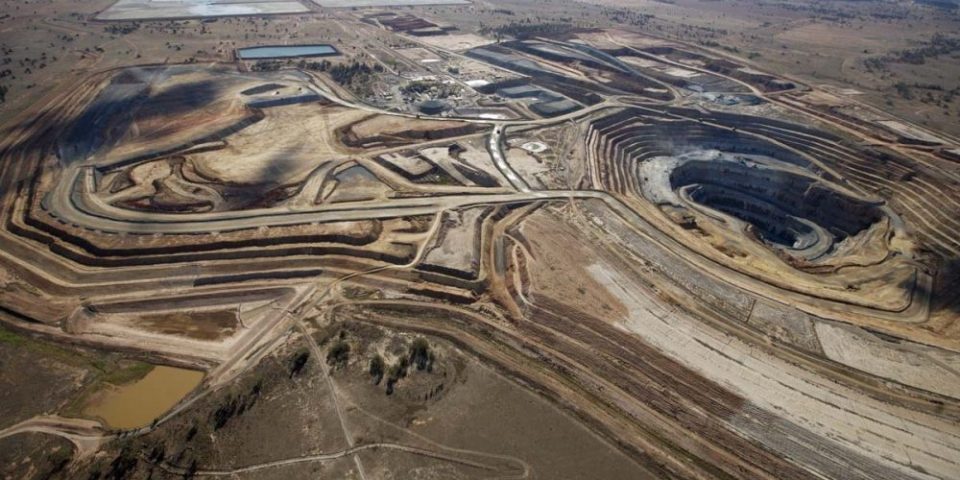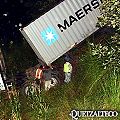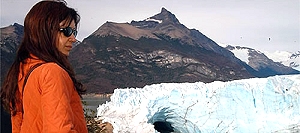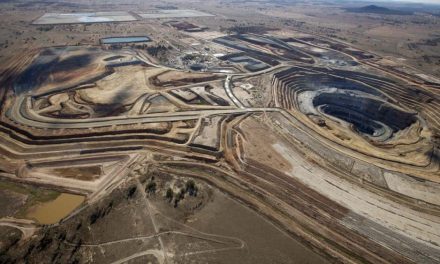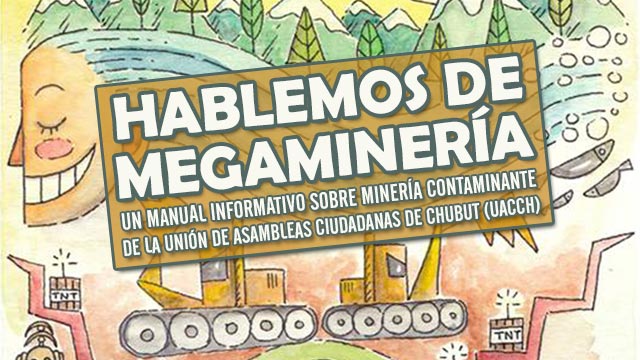Grass Valley, California, Estados Unidos – 03/06/08. ¿Debe la gente del Grass Valley permitir que este proyecto siga adelante? – El trabajo es algo muy bueno pero NO cuando viene a expensas de todo. ¿Por qué una corporación y un montón de inversionistas conseguirán ser ricos mientras que la gente de Grass Valley debe vivir con problemas ambientales masivos… Escriba por favor una carta a: Tom Last, Planning Director, City of Grass Valley, 125 East Main Street, Grass Valley, CA 95945. e-mail to toml@cityofgrassvalley.com
Yes, jobs are a good thing, but not when they come at the expense of everything else in life. Why should a corporation and a bunch of investors get rich while the people of Grass Valley get to live with the massive environmental insults, attendant health problems and reduced quality of life? If you agree that the value proposition of this project is unfavorable, then please write a letter to the City of Grass Valley Planning Department and let them know what you think. Send letters to: Tom Last, Planning Director, City of Grass Valley, 125 East Main Street, Grass Valley, CA 95945, or send an e-mail to toml@cityofgrassvalley.com.
Por: David Brownstein publicado en The Union
La corporación canadiense Emgold ha propuesto un plan para reabrir la mina histórica de Idaho-Maryland. Esta fue la segunda mina de oro subterránea mas grande de California que funcionó entre 1861 y 1956
Carta de un vecino de la ciudad de Grass Valley en el estado de California, EEUU
David Brownstein es un vecino Grass Valley, y presidente de la Wolf Creek Community Alliance
¿Debe la gente del Grass Valley permitir que este proyecto siga adelante?
Hay una variedad de muy buenas razones que nos obligan a negarnos a este proyecto.
Una preocupación es la cantidad increíble de desechos peligrosos que serán creados por esta empresa durante los 20 años de funcionamiento. Ascenderían a unas 14 a 20 millones de toneladas de estériles más 140 toneladas estimadas de barroc tóxico altamente concentrado. Difícilmente podamos creer que es posible contener con seguridad los desechos peligrosos de estas magnitudes.
La mina de Idaho-Maryland se encuentra dentro de nuestras reservas locales de agua subterránea y la composición del suelo adyacente contiene pirita (FeS2). La pirita expuesta al agua y a al aire durante el proceso de explotación minera reacciona como ácido sulfúrico dando por resultado drenaje ácido de la mina.
Muchos residentes del área sufrirán los efectos del bombeo que realizará la minera sobre un mil millones de galones de agua subterránea en el primer año de operación.
Todos los residentes de California debería estar preocupados acerca de la alta probabilidad de contaminación del agua subterránea que este proyecto significa. Esta explotación podría afectar el abastecimiento de agua de la sierra, que provee sobre el 60 por ciento del agua potable para California.
¿Cuál es el valor del agua? ¿Cuál es el valor de la salud?
Quiero precisar que tenemos varios ejemplos locales de minas que contaminaron los recursos hídricos. Por ejemplo la descarga tóxica sobre el agua subterránea de la mina Empire que fluye detrás del Memorial Park. Otro caso es Banner Lava Cap en Greenhorn Creek, contaminado.
Creo que es una cuestión de tiempo antes de que tengamos que ocuparnos de otros ejemplos en nuestra comunidad.
Desafortunadamente, la contaminación del agua subterránea es solamente uno de los peligros. La misma minera Emgold reconoce que están solicitando a la gente de que mitigará y controlará una variedad de riesgos ambientales como la contaminación del agua (metales pesado, manganeso, arsénico, plomo), contaminación del aire (ozono, CO, SO2, gases orgánicos reactivos), polvo que contiene metales pesados, asbesto), contaminación sonora, vibraciones, exposición a productos químicos peligrosos (tales como cianuro, hidróxido de sodio, ácido hidroclórico, nitrato de plomo, ácido monopersulfúrico, xantato isobutílico del sodio, y carbinol isobutílico metílico).
Si no creen en mi palabra los invito a que lean el artículo “NOP/Environmental Initial Study, Sept. 7, 2007,” chapter three, “Project Description” and chapter four, “Environmental Checklist and Discussion” en el Site Web de Grass Valley.
Este proyecto amenaza a los tres pilares de la economía local: 1) valores de una propiedad, 2) turismo, y 3) nuestras industrias de alta tecnología locales.
El trabajo es algo muy bueno pero NO cuando vienen a expensas de todo.
¿Por qué una corporación y un montón de inversionistas conseguirán ser ricos mientras que la gente de Grass Valley debe vivir con problemas ambientales masivos, problemas de salud y dismunición de la calidad de vida?
Si usted piensa que este proyecto es desfavorable, escriba por favor una carta a:
Tom Last, Planning Director, City of Grass Valley, 125 East Main Street, Grass Valley, CA 95945.
e-mail to toml@cityofgrassvalley.com
Tom Last, director de planificación, ciudad Grass Valley, 125 East Main Street, Grass Valley, CA 95945.
David Brownstein es un vecino Grass Valley, y presidente de la Wolf Creek Community Alliance
The Canadian corporation Emgold has proposed an audacious plan to reopen the historic Idaho-Maryland Mine. Should the people of Grass Valley allow this project to proceed?
There are a variety of very good reasons that I believe compel us to deny this project.
One concern is the incredible amount of hazardous waste that will be created by this massive industrial manufacturing enterprise during its projected 20-year operating span. It would amount to some 14 to 20 million tons of tailings plus an estimated 140 tons of highly concentrated toxic sludge from the water treatment facility. It’s hard to believe that it is possible to safely contain hazardous waste of this magnitude.
In addition, recent studies show that in the U.S. 100 percent of all mining project claim that it would not violate Clean Water Act standards. In fact, “93 percent of mines that are near groundwater and have elevated potential for acid drainage or contaminant leaching, exceeded water-quality standards.” (For details see: “Comparison of Predicted and Actual Water Quality at Hardrock Mines,” and “Predicting Water Quality Problems at Hardrock Mines: Methods and Models, Uncertainties, and State-of-the-Art,” by Kuipers, P.E., and geochemist Ann Maest, Ph.D.)
The Idaho-Maryland Mine is embedded within our local groundwater reservoir and it contains pyrite (FeS2). Pyrite exposed to water and the atmosphere during the mining process reacts to form sulfuric acid, resulting in acid mine drainage.
Many area residents are concerned about the effects that pumping over 1 billion gallons of groundwater in the first year of operation would have on their wells. In my opinion, all California residents should be concerned about the high probability of groundwater contamination that this project confers upon our water supply. This water will contribute to the overall level of contaminants in the water supply from the Sierra, which supplies over 60 percent of the drinking water for California.
What is our water worth? What is our health worth? I want to point out that we have several prominent local examples of mines that contaminated water resources – notably the Magenta Drain (toxic groundwater discharge from Empire Mine flowing behind that big fence in Memorial Park), and the Banner Lava Cap EPA Superfund site that has contaminated Greenhorn Creek. I believe it is just a matter of time before we have to deal with other examples in our community.
Unfortunately, groundwater contamination is only one of the possible environmental hazards of this project. Even Emgold acknowledges that they are asking the people of Grass Valley to endure a variety of environmental risks in the form of water contamination (heavy metals such as iron, manganese, arsenic, and lead), air contamination (ozone, CO, SO2, reactive organic gases), diesel particulate matter and dust containing heavy metals, arsenic, and asbestos), noise pollution, serious ground vibration, and possible exposure to dangerous chemicals (such as cyanide, sodium hydroxide, hydrochloric acid, lead nitrate, peroxymonosulfuric acid, sodium isobutyl xanthate, and methyl isobutyl carbinol).
Please don’t take my word for this, I invite you to read the “NOP/Environmental Initial Study, Sept. 7, 2007,” chapter three, “Project Description” and chapter four, “Environmental Checklist and Discussion” documents on the City of Grass Valley Web site.
All this makes me believe that this project will threaten the three pillars of the local economy: 1) property values, 2) tourism, and 3) our local high-technology industries (there are over 80 local companies, with a cluster in the Whispering Pines business park directly above the mine).
Yes, jobs are a good thing, but not when they come at the expense of everything else in life. Why should a corporation and a bunch of investors get rich while the people of Grass Valley get to live with the massive environmental insults, attendant health problems and reduced quality of life?
If you agree that the value proposition of this project is unfavorable, then please write a letter to the City of Grass Valley Planning Department and let them know what you think. Send letters to:
Tom Last, Planning Director, City of Grass Valley, 125 East Main Street, Grass Valley, CA 95945, or send an e-mail to toml@cityofgrassvalley.com.
David Brownstein is a resident of Grass Valley and the President of Wolf Creek Community Alliance.

